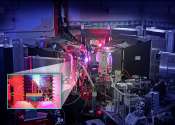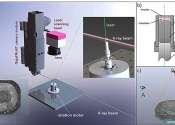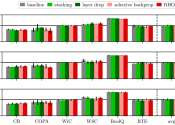Laser additive manufacturing: Listening for defects as they happen
Researchers from EPFL have resolved a long-standing debate surrounding laser additive manufacturing processes with a pioneering approach to defect detection.
Dec 5, 2023
0
28
Engineering

Researchers from EPFL have resolved a long-standing debate surrounding laser additive manufacturing processes with a pioneering approach to defect detection.
Dec 5, 2023
0
28
Computer Sciences

In the last year, large language models (LLMs) have come into prominence for boasting a suite of ever-expanding capabilities including text generation, image production, and, more recently, highly descriptive image analysis. ...
Nov 17, 2023
0
1
Computer Sciences

Face recognition technology emulates human performance and can even exceed it. And it is becoming increasingly more common for it to be used with cameras for real-time recognition, such as to unlock a smartphone or laptop, ...
Nov 13, 2023
0
53
Security

A new test of popular AI image generators shows that while they're supposed to make only G-rated pictures, they can be hacked to create not suitable for work (NSFW) content.
Nov 2, 2023
0
73
Engineering

Using neutrons to see the additive manufacturing process at the atomic level, scientists have shown that they can measure strain in a material as it evolves and track how atoms move in response to stress.
Oct 16, 2023
0
178
Machine learning & AI

Researchers at the Department of Energy's SLAC National Accelerator Laboratory have demonstrated a new approach to peer deeper into the complex behavior of materials. The team harnessed the power of machine learning to interpret ...
Oct 12, 2023
1
55
Engineering

Material used in organic solar cells can also be used as light sensors in electronics. This has been shown by researchers at Linköping University, Sweden, who have developed a type of sensor able to detect circularly polarized ...
Sep 28, 2023
0
15
Engineering

3D printing can produce highly complex shapes. But printing ceramic objects with the help of a laser is a more difficult challenge. Now researchers at the Paul Scherrer Institute PSI have for the first time taken tomograms ...
Sep 19, 2023
0
43
Engineering

By mining data from X-ray images, researchers at MIT, Stanford University, SLAC National Accelerator, and the Toyota Research Institute have made significant new discoveries about the reactivity of lithium iron phosphate, ...
Sep 13, 2023
0
36
Computer Sciences

An AI-infused future has tremendous promise in virtually all aspects of our lives from medicine to education, industry to finance.
An image (from Latin imago) is an artifact, or has to do with a two-dimensional (a picture), that has a similar appearance to some subject—usually a physical object or a person.
Images may be two-dimensional, such as a photograph, screen display, and as well as a three-dimensional, such as a statue. They may be captured by optical devices—such as cameras, mirrors, lenses, telescopes, microscopes, etc. and natural objects and phenomena, such as the human eye or water surfaces.
The word image is also used in the broader sense of any two-dimensional figure such as a map, a graph, a pie chart, or an abstract painting. In this wider sense, images can also be rendered manually, such as by drawing, painting, carving, rendered automatically by printing or computer graphics technology, or developed by a combination of methods, especially in a pseudo-photograph.
A volatile image is one that exists only for a short period of time. This may be a reflection of an object by a mirror, a projection of a camera obscura, or a scene displayed on a cathode ray tube. A fixed image, also called a hard copy, is one that has been recorded on a material object, such as paper or textile by photography or digital processes.
A mental image exists in an individual's mind: something one remembers or imagines. The subject of an image need not be real; it may be an abstract concept, such as a graph, function, or "imaginary" entity. For example, Sigmund Freud claimed to have dreamt purely in aural-images of dialogues. The development of synthetic acoustic technologies and the creation of sound art have led to a consideration of the possibilities of a sound-image made up of irreducible phonic substance beyond linguistic or musicological analysis.
This text uses material from Wikipedia, licensed under CC BY-SA